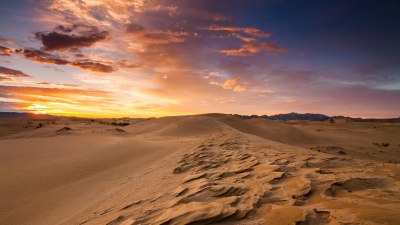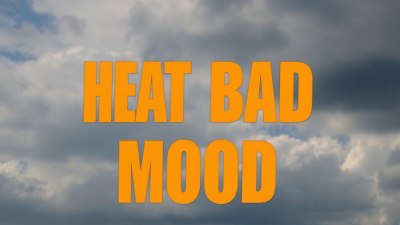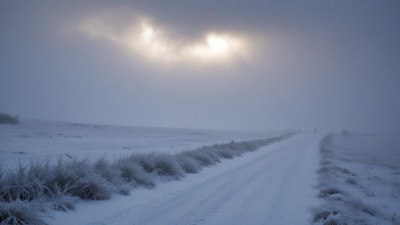Why Some Deserts Have Flash Floods After Years Without Rain
Discover the surprising reasons behind rare flash floods in deserts after long dry spells.

Deserts are often seen as barren, dry regions, where rainwater is a rare occurrence. However, certain desert areas can experience sudden and intense flash floods, even after years of dry conditions. Understanding the mechanics behind these phenomena is essential to grasp the unique hydrological processes occurring in such arid environments. In this article, we delve into the factors that contribute to the occurrence of flash floods in deserts, the environmental conditions that precede these extreme events, and their implications for the ecosystem and human activities.
The Nature of Deserts
At first glance, deserts seem inhospitable due to their low annual precipitation, extreme temperatures, and limited vegetation. Deserts are classified into various types, including hot deserts, like the Sahara, and cold deserts, like the Gobi. Despite the differences in temperature, both types of deserts share the characteristic of low moisture retention, which plays a significant role in the formation of flash floods.
Understanding Flash Floods
Flash floods are sudden and intense floods that occur within six hours of heavy rainfall events. In deserts, these floods can arise due to specific climatic and topographical situations. Unlike continuous rainfall found in other regions, desert rain often comes in the form of brief, heavy storms that do not allow for soil absorption. When this occurs, water rushes over the surface, leading to rapid runoff and flash flooding.
Causes of Flash Floods in Deserts
Several interconnected factors contribute to the occurrence of flash floods in desert areas:
1. Intense Rainfall Events
Desert regions may experience sporadic storms that yield significant rainfall in a short period. While the average annual rainfall might be low, a storm can deliver several inches of rain in just a few hours. The capacity of the soil to absorb this sudden influx is often overwhelmed, leading to rapid water accumulation and runoff.
2. Soil Saturation and Dry Conditions
Interestingly, when deserts undergo prolonged dry spells, the top layer of soil becomes crusted and hardened, significantly reducing its porosity. As a result, when rain finally does come, the soil is unable to absorb water quickly. This lack of absorption enhances runoff, increasing the risk of flash flooding.
3. Topographical Features
The geography of desert landscapes also plays a critical role in flood dynamics. Many deserts feature steep terrain and canyons that facilitate rapid water flow. When heavy rain falls in these regions, water flows down slopes and accumulates in low-lying areas, contributing to flash flooding.
4. Vegetation Impact
While vegetation is sparse in desert environments, when it does occur, it can influence water flow. Vegetation typically stabilizes the soil and enhances water infiltration. However, during a rainstorm, the absence or limited presence of vegetative cover can contribute to faster runoff and increased chances of flooding. When plants are scarce, less water is absorbed into the ground.
5. Climate Change
Climate change has been a vital factor in shifting precipitation patterns, often resulting in extreme weather events, including intensified rainfall in certain areas. Shifts in atmospheric conditions can lead to unexpected torrential rains in deserts, prompting flash floods in regions unprepared for such dynamics. Furthermore, climate change can exacerbate the frequency of droughts and sudden rainfall events, further complicating flood patterns.
Consequences of Flash Floods
The implications of flash floods in desert regions can be significant. On one hand, they can create temporary water sources, benefitting local wildlife and plants that rely on infrequent water availability. On the other hand, sudden floods can have destructive consequences for human settlements, infrastructure, and the environment.
1. Effects on Ecosystems
Deserts, despite their rough conditions, can experience bursts of life following flash floods. The influx of water provides a much-needed resource, allowing dormant seeds to germinate and flora to bloom, temporarily transforming the landscape. However, this can also lead to erosion as fast-moving water alters habitats and disrupts existing ecosystems.
2. Impact on Human Settlements
For communities situated in or around desert areas, flash floods can pose a heavy risk. Infrastructure such as roads, bridges, and homes can be severely damaged, leading to costly repairs and economic implications. Moreover, the unpredictable nature of flash floods challenges emergency preparedness efforts, often catching residents off guard.
3. Long-term Changes
Repeated occurrences of flash flooding can lead to long-term alterations in desert landscapes. Flooding can reshape topographical features, form new water bodies, and affect sediment distribution. Changes may also result in shifts in the composition of flora and fauna, leading to new ecological dynamics.
Mitigation and Preparedness
Given the risks associated with flash flooding in desert regions, preparedness and proper management techniques are crucial. Communities can improve their resilience to flash floods through various strategies. Effective land use planning considers topographical features and soil types, minimizing residential and commercial development in high-risk zones.
1. Flood Warning Systems
Implementing reliable flood warning systems can aid in mitigating risks. Establishing early warning systems and alert mechanisms ensures that communities receive timely information regarding impending storms and potential flooding risks. Public awareness campaigns can also educate residents on safety measures during flash floods.
2. Infrastructure Improvements
Investing in infrastructure designed to manage stormwater is essential. This includes the construction of drainage systems, levees, and retention basins capable of directing and managing runoff effectively. Such infrastructure can help minimize the impact of flash floods on communities.
3. Environmental Restoration
Efforts to restore natural habitats in deserts can also be beneficial. By increasing vegetation cover and enhancing soil quality, the ability of the land to absorb water improves, reducing the chances of flooding. Rehabilitating wetlands and planting native vegetation further supports ecosystem resilience, helping mitigate flood risks.
Flash floods in desert regions illustrate the complex interplay between climate, geography, and hydrology. These intense and sudden natural phenomena remind us of the ever-changing dynamics within ecosystems, even in the most arid landscapes. As our world continues to change, understanding how flash floods occur in deserts and implementing proactive measures can help safeguard human activities and promote ecological health. Preparing for the unpredictable nature of desert weather remains a vital necessity for protecting both natural resources and communities.











